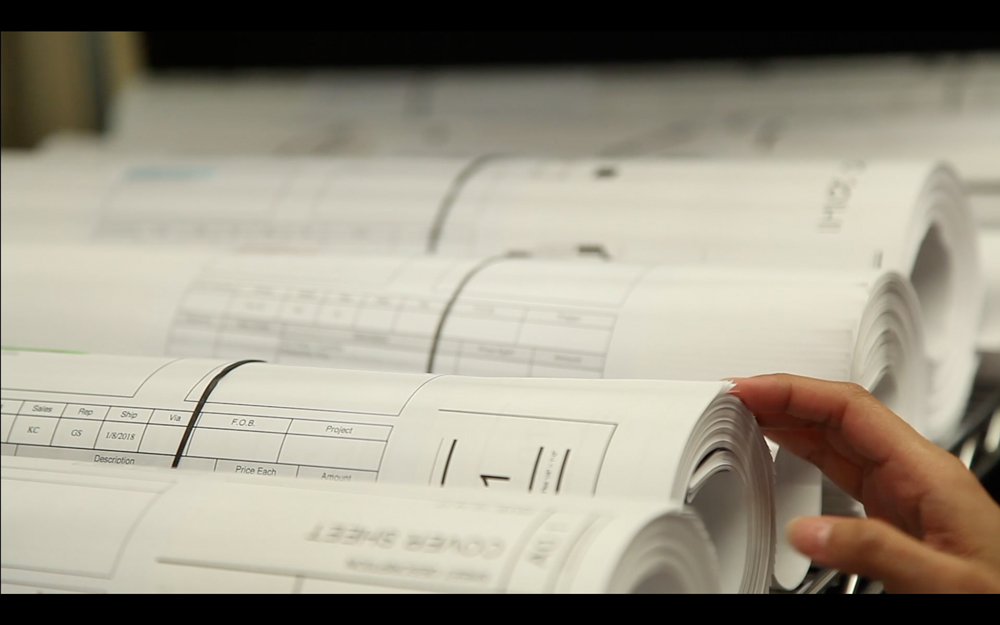From Gutenberg to the Digital Age: Reprographics and Document Management
June 13, 2022What are reprographics?
Reprographics is a history of rapidly duplicating graphics. The term “reprography” was coined in the 1960s by the Haloid Corporation. It later became Xerox Corporation, to describe its then-new xerography photocopying process. This new process was significantly faster than previous methods of duplicating images, such as lithography or even photolithography. Reprographic history dates back to the early days of printing, when artists would manually copy images onto plates for printing.

(If you are old enough to have been in the working world in the 1960s, you are probably familiar with the use of the term “xerox” or “xeroxing” when referring to a photocopy or making a photocopy of a document. But the Xerox Corporation mounted a major campaign to protect their trademark, especially from the use of the word as a verb.)
What is digital reprographics?
Reprographics refers to the art and science of creating copies of images and documents. Today, reprographics is mainly used for photocopying, scanning, and printing documents. However, the term can also refer to the creation of digital copies of images and documents. This is because the term applies to both physical (hard copy) and digital (soft copy) reproductions of documents and images.
In the business world, reprographics is often used for marketing and advertising purposes. For example, businesses may use reprographics to create copies of product brochures or marketing collateral. In the academic world, reprographics is often used for research purposes. For example, students and scholars may use reprographics to create copies of archival materials or primary sources.
Today, digital reprographics has emerged as the most common form of document copying and distribution. With digital reprographics (digital printing services), there is no need for paper copies or printing plates. Instead, documents can be scanned and stored electronically, and copies can be made with the push of a button. This makes digital reprographics a more efficient and environmentally-friendly option for businesses and individuals alike.
Digital printing services are also ideal for businesses and individuals who need short runs of high-quality prints.
Use of reprographics in architectural design fields
In the fields of architecture and drafting, reprographics is used with computer-aided design (CAD) and other digital tools to create construction documents. It is a key part of the architectural design process, and it allows architects to create accurate, detailed drawings that can be used for everything from construction to marketing purposes. Digital printing offers a number of advantages over traditional reprographics, including faster turnaround times, more accurate colors, and lower costs. As a result, more and more architects are turning to digital printing services for their reprographics needs.
Reprographics printing has also provided an avenue for architects to save time and money. What was once done with a photocopier and scanner can now be produced much more quickly through a wide range of digital printing services.
Other users of these reprographic or digital printing services include real estate and building management firms, construction managers, and facilities maintenance firms.
Use of scanning in document management
Anyone that’s tried to scan an oversized document on an 8×11 or legal size scanner screen knows it’s a challenge. Document scanning on a large scale requires large machines. At Brandywine CAD, we can accommodate documents up to 42×120 inches in size for scanning. But our services go beyond scanning itself, and include setting up organized file structures and indexing to assist in document management.
We are also able to accommodate a wide range of documents to scan, including microfilm and microfiche, 35mm aperture cards, photographs, and double-sided documents. Where needed, we can provide cleanup of the images on the documents and image optimization for optical character recognition.
Fast Service on Tight Deadlines
One more important point: Delivery under extremely tight deadlines is often standard operating procedure in the architectural and design field. A job needs to go out for a bid or for permits, and the architect or engineer needs to make use of every minute to polish the drawings before releasing for printing. This is an area where Brandywine CAD shines, receiving the project documents at the end of a day when they have to go out for bid the following day. We are accustomed to performing on those tight turnaround times.
And for icing on the cake, we can print, mount, and laminate the finished product for presentations or advertising purposes!
Business and especially the architectural/design fields have come a long way from hand-drawn blueprints to computer-aided design and digital printing services. What was once limited to black and white, in limited size, is now big and bold–in brilliant colors and sizes. And in many cases, doesn’t even require paper. One can only imagine what will develop in the next 60 years. For all of your reprographic, scanning, and document management needs, you can rely on the expertise of the staff and sophisticated equipment you will find at Brandywine CAD. Contact us today to learn how we can help you